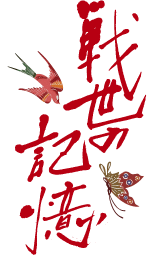
The October 10 Air Raid
The October 10 Air Raid
Name: Kenichi Nagamine (35長嶺健一)
Date of birth: September 25, 1927
Place of birth: Naha City
At the time: 18-year-old Okinawa Industrial School student
October 10, 1944
I left my house in Gushi slightly before 7 o'clock. It was then that anti-aircraft artillery fire started bursting from the hills of Ameku.
I thought: “It’s strange. We hadn’t been told that there would be a drill. There’s something strange.” But then, there was a black airplane flying over Naha Port.
I said: “Oh! It doesn’t look like a Japanese airplane. It doesn’t have a Hinomaru (rising sun) mark on it!” Just as I was saying that, the plane started dropping bombs, and flames started flaring up more and more in Naha Port. Then, someone said: “Hey, this is serious! We must go to the school quickly. A very serious situation will occur.” So, we rushed to our school.
When we arrived at the school, it was already around 8:30. Yamashiro sensei (teacher) and the vice principal were standing in front of the entrance to the school. They said: “Oh, you’ve come here, but school will be closed today, so go home and help your family with evacuation.” Therefore, we went home, replying: “We will go home then.”
Situation of Naha Port as Seen from the Asato Area
When we arrived in Asato, airplanes were buzzing overhead, and smoke was rising in Naha as well.
I thought: “This is serious. If we take our usual route, we’ll get killed in this bombing, so we should go down the road in Asato and go from the sugarcane fields in Mawashi.” We went through the sugarcane fields and arrived in what is now Kainan.
Then I suggested going to my friend Kozo Kinjo’s house in Nishimachi “to take a peek at what was going on.” When we went to see the house, it was not burned down yet, so we talked with the family, saying, “It’s all right. It’s all right.” As we were saying that, air raid sirens went off about 10 minutes later, and many planes came flying by. There was an open tomb nearby, so we slid into it, as we had no choice. Three people were already inside there, moving about restlessly. The tomb was filled with a strange smell. There was the stench of death drifting in the air. We hid in the tomb, bearing that smell. About 10 minutes after we entered the tomb, the air raid warning was called off.
I had to pass by Naha Port in order to go home, so when I passed by there, I saw a ship. I did not know whether it was a naval vessel, but when I looked closely, there was a navy soldier in white uniform standing by to fire a rapid-fire cannon and a machine gun. However, when he started shooting these weapons, they made funny sounds. They did not make explosive sounds. They only made popping sounds. Japanese cannons did not hit (enemy) airplanes at all. As I stood still and watched that, the soldier, who had finished firing, turned around. He said: “What are you looking at, idiot? Hurry up and go away!”
Returning Home Safely Amid Bombings
There was a Showa Bus depot, and in front of the depot, there was a large ditch. As I arrived there, there was another air raid. I said to myself, “Oh no, this is dangerous!” So, I dove into this ditch. Then, wondering “what was happening around the surrounding area,” I stuck my head out fearfully to look around me. There was a small fishing boat that was on fire at the stern. As I was thinking that this “was a serious situation,” a man carrying a small baggage popped out. Less than a minute later, he fell flat on the ground. He was hit by machine gun fire. I thought: “Oh, this is very bad. It may be my turn next, so I must flee before Meiji Bridge is destroyed.” So, from that point, I fled on the double.
I managed to cross the the bridge. Next, there was the Gajanbira (Kakinohana) hill. Hoping to go to Kinjo by climbing the hills, I kept going while keeping myself hidden in sugarcane fields. Hiding here and there, I finally managed to reach my house, avoiding the bombings.
Around evening, I climbed a pine tree and watched the city of Naha burn down. The sky also looked aflame in red. There was a fuel storage place in Nishimachi, and when fuel drum cans ignited, they would explode and flames would flare up. Then, sparks would spread out in the air like fireworks. As I was watching that, a Japanese soldier approached me and said: “Hey, you. If you climb up there wearing a white shirt, you will be spotted by the enemy and get killed by enemy planes, so get down!” I was startled, so I climbed down, saying, “All right, all right,” and went home.
During the October 10 air raid, Naha was truly a battlefield as machine gun fire kept whizzing by and bombs kept falling.
Name: Kenichi Nagamine (35長嶺健一)
Date of birth: September 25, 1927
Place of birth: Naha City
At the time: 18-year-old Okinawa Industrial School student
October 10, 1944
I left my house in Gushi slightly before 7 o'clock. It was then that anti-aircraft artillery fire started bursting from the hills of Ameku.
I thought: “It’s strange. We hadn’t been told that there would be a drill. There’s something strange.” But then, there was a black airplane flying over Naha Port.
I said: “Oh! It doesn’t look like a Japanese airplane. It doesn’t have a Hinomaru (rising sun) mark on it!” Just as I was saying that, the plane started dropping bombs, and flames started flaring up more and more in Naha Port. Then, someone said: “Hey, this is serious! We must go to the school quickly. A very serious situation will occur.” So, we rushed to our school.
When we arrived at the school, it was already around 8:30. Yamashiro sensei (teacher) and the vice principal were standing in front of the entrance to the school. They said: “Oh, you’ve come here, but school will be closed today, so go home and help your family with evacuation.” Therefore, we went home, replying: “We will go home then.”
Situation of Naha Port as Seen from the Asato Area
When we arrived in Asato, airplanes were buzzing overhead, and smoke was rising in Naha as well.
I thought: “This is serious. If we take our usual route, we’ll get killed in this bombing, so we should go down the road in Asato and go from the sugarcane fields in Mawashi.” We went through the sugarcane fields and arrived in what is now Kainan.
Then I suggested going to my friend Kozo Kinjo’s house in Nishimachi “to take a peek at what was going on.” When we went to see the house, it was not burned down yet, so we talked with the family, saying, “It’s all right. It’s all right.” As we were saying that, air raid sirens went off about 10 minutes later, and many planes came flying by. There was an open tomb nearby, so we slid into it, as we had no choice. Three people were already inside there, moving about restlessly. The tomb was filled with a strange smell. There was the stench of death drifting in the air. We hid in the tomb, bearing that smell. About 10 minutes after we entered the tomb, the air raid warning was called off.
I had to pass by Naha Port in order to go home, so when I passed by there, I saw a ship. I did not know whether it was a naval vessel, but when I looked closely, there was a navy soldier in white uniform standing by to fire a rapid-fire cannon and a machine gun. However, when he started shooting these weapons, they made funny sounds. They did not make explosive sounds. They only made popping sounds. Japanese cannons did not hit (enemy) airplanes at all. As I stood still and watched that, the soldier, who had finished firing, turned around. He said: “What are you looking at, idiot? Hurry up and go away!”
Returning Home Safely Amid Bombings
There was a Showa Bus depot, and in front of the depot, there was a large ditch. As I arrived there, there was another air raid. I said to myself, “Oh no, this is dangerous!” So, I dove into this ditch. Then, wondering “what was happening around the surrounding area,” I stuck my head out fearfully to look around me. There was a small fishing boat that was on fire at the stern. As I was thinking that this “was a serious situation,” a man carrying a small baggage popped out. Less than a minute later, he fell flat on the ground. He was hit by machine gun fire. I thought: “Oh, this is very bad. It may be my turn next, so I must flee before Meiji Bridge is destroyed.” So, from that point, I fled on the double.
I managed to cross the the bridge. Next, there was the Gajanbira (Kakinohana) hill. Hoping to go to Kinjo by climbing the hills, I kept going while keeping myself hidden in sugarcane fields. Hiding here and there, I finally managed to reach my house, avoiding the bombings.
Around evening, I climbed a pine tree and watched the city of Naha burn down. The sky also looked aflame in red. There was a fuel storage place in Nishimachi, and when fuel drum cans ignited, they would explode and flames would flare up. Then, sparks would spread out in the air like fireworks. As I was watching that, a Japanese soldier approached me and said: “Hey, you. If you climb up there wearing a white shirt, you will be spotted by the enemy and get killed by enemy planes, so get down!” I was startled, so I climbed down, saying, “All right, all right,” and went home.
During the October 10 air raid, Naha was truly a battlefield as machine gun fire kept whizzing by and bombs kept falling.


